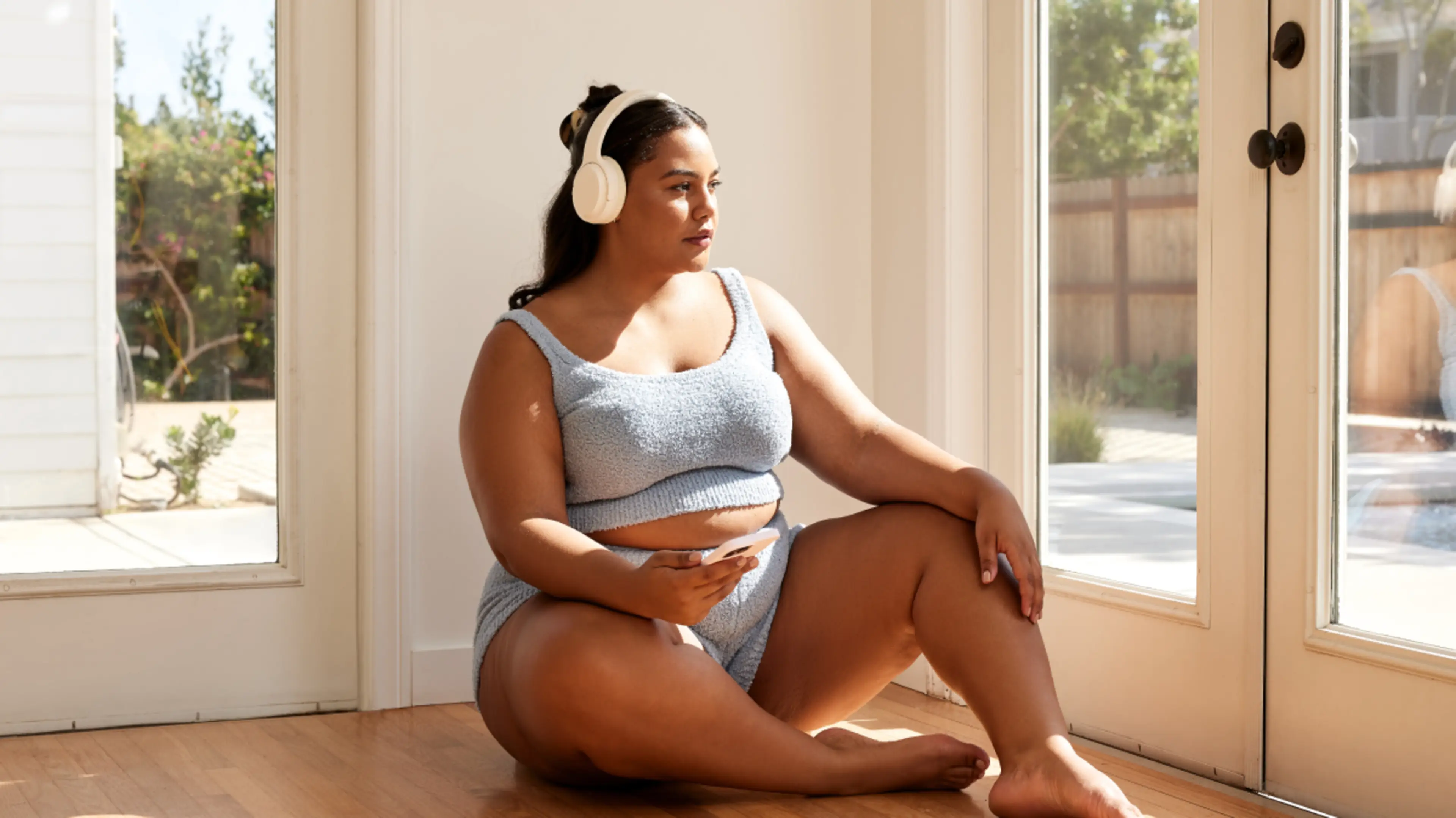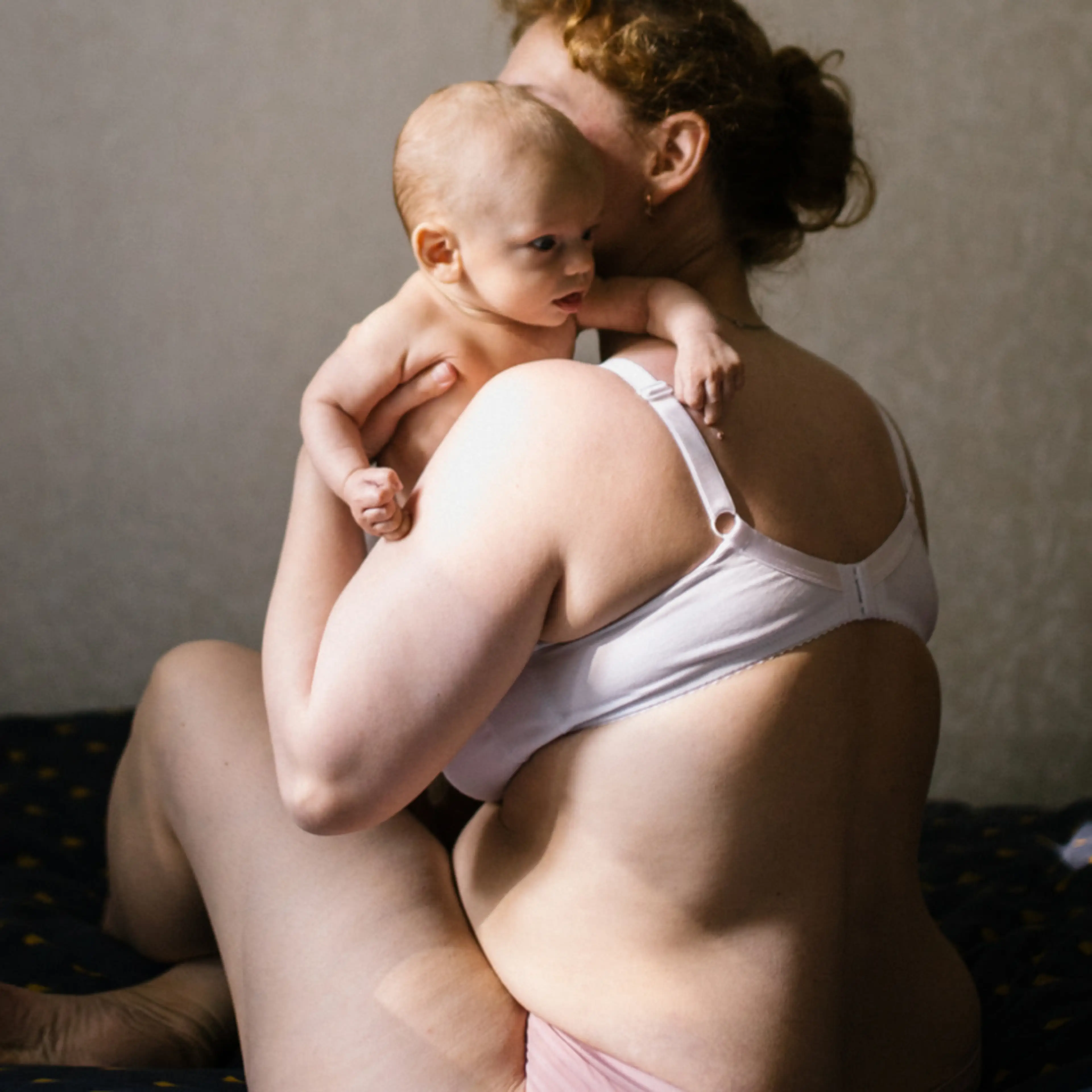Fun fact about me: I’ve had the words "try a meditation app" on my to-do list for months. They have yet to move to the “Done” column. Like exercise or eating greens, sometimes finding the time and motivation to do something we know is good for us can be challenging, especially as new parents.
Joy Rains, author of Meditation Illuminated: Simple Ways to Manage Your Busy Mind1 says the two most common things she hears from people who are hesitant about meditation are: I can’t meditate since my mind is too busy and I don’t have time to practice meditation.
I, for one, feel seen.
The good news is that you can meditate without actually meditating. Your practice doesn’t have to entail sitting in the lotus position in a dark room for an hour (which is great for pregnant people who can’t see their feet let alone tuck them into their hips).
Instead, you can integrate mindful practices and even cultivate a meditative state by doing other activities, even ones as simple as showering, walking, or folding the laundry.
What Is the Goal of Meditation?
It’s well known that meditation offers a host of health benefits, from improving sleep quality to lowering stress and anxiety. But before we dive into how to replicate these effects through other activities, it’s important to understand what the bigger goal of meditation is in the first place.
“The idea of meditation is to be gentle and self-compassionate, to see ourselves more holistically, not through a lens of judgment, but to simplify our moments from moment to moment. We can bring the concept of meditation into our daily lives, and we will benefit tremendously from that,” says Michele Greco, a mindfulness-based somatic coach who works with new parents both remotely and in the Portland, Oregon area.
Greco says that she sees people get intimidated by the idea of meditation because they think that they're supposed to sit down and clear their minds.
“That's tricky because it puts you in a position where you're sitting down to meditate with an agenda, which makes it feel like work. It’s not to say that meditation isn't somewhat of a task on occasion, but it's not meant to be an agenda-driven experience.”
So, with that in mind, read on for expert suggestions on ways to meditate without, well, meditating—at least not in the way we typically imagine.
Limit External Stimuli Throughout Your Day
If you’re like me, much of your life is spent looking at a screen, listening to a podcast or an audiobook, checking your phone, and playing music (or some combo of the above). It can be…a lot. Meditation is partially a practice of not allowing all the noise, both literal and figurative, in.
“I think the goal of meditation is to step away from the tremendous amount of external stimulus and constant input in our lives and instead take a look inside and be present with what shows up as we turn toward ourselves,” Greco says.
Shutting off the noise can initially be a little harder to do than it might seem as we often aren’t even aware of how much we’re allowing into our mental space. Take driving in the car, for example: do you need the radio, NPR, or your audiobook? Instead, Greco asks, “Can you have a quiet, peaceful moment and listen to your thoughts?”
Focus on a Mundane Task
You may be surprised to learn that washing the dishes or folding laundry can be a form of meditation if you make it one. Greco calls this practice unitasking, which is the opposite of what many of us do all day long—multitasking. Unlike multitasking where you’re attention is scattered in many directions at the same time, unitasking asks that you give whatever you're doing—one thing, and one thing only—your full attention.
The key with this type of non-meditation meditation is to limit your external stimuli (though Greco says putting on some “non-evocative” music can help), focus on a task that is repetitive and doesn’t require a lot of mental effort (think straightening the house, prepping a dinner you’ve made a million times, or even puzzling), and allowing yourself to be in your thoughts.
Remember, meditation isn’t a practice of stopping thoughts—you will be thinking as you fold a million tiny onesies. Instead, Rains explains, it’s a practice of noticing your wandering mind and shifting your attention back to something that “anchors” you in the present moment—such as your breath—without judgment or internal comment. “Expect that thoughts and feelings will continue to arise, and you may need to shift your attention back to your anchor every second or two. That’s part of the practice,” she says.
Be Present While Feeding Your Baby
It’s not always possible (or the goal) to enter a meditative state while feeding your baby—sometimes, what you really need is to watch a mindless show or scroll (more on distractions later). But feeding your baby, whether breast or bottle, can be a good time to practice being present and focused on what you’re doing.
“Essentially, you're giving both yourself and your child your attention. Simplifying the outside stimulus during that time, to me, feels like a wonderful idea. Be present even with the loneliness. Be present with how hard your body's working in that moment. Be present with whatever you might feel, whatever emotions might be,” Greco says.
It’s a win-win: you can connect with your newborn while also getting the calming, stress-reducing benefits typical of meditation.
Try a Walking Meditation
Both Greco and Rains suggest walking as a form of meditation. “Bring your attention to the soles of your feet as you walk. Anytime your mind wanders, shift your attention back to the feeling of your feet connecting with the ground, even if it’s every second or two,” Rains says.
Greco adds that walking is a form of bilateral stimulation, meaning it stimulates the left and right sides of the brain, which may increase certain neurotransmitters like serotonin and dopamine for a feeling of well-being. Plus, walking outside is something you will likely already be doing with your baby, and it gives you an opportunity to notice things like the colors of the trees or the scent of the flowers in bloom.
These benefits aren’t just limited to walking. Other forms of exercise like yoga or running can also be meditative, the key is to do them without the distraction of TV, music, or a podcast.
Write in a Journal
Meditation is a process of showing up for yourself in an “open, compassionate, caring, and nonjudgmental way,” as Greco says, and you can do that on the page.
One study2 that looked at web-based journaling found that spending some time writing about your feelings and experiences, especially when you focus on the positives (hello, gratitude practice), may help increase a sense of well-being.
“Journaling is amazing because it is a self-reflective tool that grows your relationship with yourself, strengthens your voice, and shows you that someone's listening and that someone is yourself,” Greco says.
She advocates writing by hand because the act of putting pencil to paper requires a different kind of activity that is engaging and healing in a way that typing is not. She also suggests getting a new notebook and pen that allows you to find your flow on the page (and hopefully have fewer hand cramps). Plus, investing in some fun new tools can make you even more excited to find the time to actually sit down and do it.
Try a Practice of “Not Knowing”
Raise your hand if you’ve ever been awake in the wee hours of the night worrying about how labor will go, or what the doctor will say at your baby’s (or your own) next appointment, or what it will be like to go back to work after maternity leave. Instead of ruminating on things that have no answer and sending your mind into a tailspin, Rains suggests cultivating a practice of not knowing.
“If you’re anxious about future outcomes, rather than making predictions about what’s next—and reacting to those predictions as if they’re true—accept the fact that you simply don’t know. Whenever another anxious thought arises, tell yourself, ‘I don’t know, and it’s okay not to know,’” she says.
Remember: meditation is a a practice. It can be hard to stop a pattern of endless worrying on the first try, so be kind to yourself if you don’t feel it’s working right away. Just making the attempt to retrain your thoughts will go a long way to giving you the stress-reducing benefits.
Notice Water
If you haven’t had a baby yet, know that when you’re postpartum, showers will feel like a sacred place where you get some quiet alone time. Rains suggests doubling down on this time by noticing water as a form of meditation.
“Anytime your skin touches water, whether you’re bathing yourself or your baby—or even if you’re washing dishes—notice the feeling of the water. What’s its temperature? Its pressure? What sound does it make? Whenever your attention wanders, shift it back to your experience of the water,” she says, adding that these practices work because they help you shift your attention to the present without judgment—just as you’d do if you were sitting to practice meditation.
Practice Giving Yourself Grace
If one reason you avoid more traditional forms of meditation is that anxious feelings arise when you sit quietly, it can be helpful to cultivate a practice of giving yourself grace and allowing yourself to have the messy feelings without pushing them away.
“Anxiety and depression and grief and loss: they're just things we can't escape in this life. We don't get through life without the myriad of feelings. Becoming a new parent is filled with great joy and excitement, but it's also filled with tremendous responsibility and grieving the loss of your prior self. It's a change of identity,” Greco says, adding that loss of identity will continue in big and small ways for your entire life.
Meditation, in whatever form you choose, is extremely powerful as a way to sit with those feelings by acknowledging them.
“Instead of condemning it and deciding that you aren't fully functioning if you're having a moment of anxiety or a moment of depression, try saying, This is a normal experience. I'm a human being and I'm having a moment of suffering. How can I best support myself in this moment?
Greco encourages clients to put a hand on their chest. on their belly, or both, and notice the physical sensations accompanying the moment of anxiety. She says you can think or literally say (your baby won’t judge you for talking to yourself), I'm allowed to have this feeling, I'm allowed to experience this, and I'm here for myself.
Frame It Through Your Child’s Eyes
Finally, if you are deep in the new mom experience and you feel like you don’t have the time or energy to do anything for yourself, then try to think of self-care as something you’re modeling for your children. Maybe you’re thinking that your two-month-old can barely see their own fist let alone grasp that you’re taking time for yourself to meditate, but one day that baby will be able to see more than a few feet in front of them, and they’ll start to notice how you treat yourself.
“Children learn tremendous amounts by the things they see that we aren't actively attempting to teach them,” Greco says. “Modeling that it's important to care for yourself in a kind, loving, and nonjudgmental way is an exceptional thing to be able to give your children.”
And No Matter What, Be Kind to Yourself
Understand that distractions will happen and that’s okay. There will be days where taking a moment for mindfulness will seem truly impossible, even if someone were to offer you a million dollars. Greco says that sometimes you will choose to scroll on social media or “online shop for some very unneeded thing” just because you know it will bring a handful of joy in the moment. And that is just fine. That can be self-care, too.
In those moments, instead of punishing yourself for not crossing “meditate” off on your to-do list, trust that when you have the time, energy, or “simply the courage to turn toward what's holding [you] down right now,” you are going to do that.
And remember, that all it takes is a slight shift in your attention. Rather than thinking of meditating as an either/or situation—you can either sit quietly for 10 minutes while the baby naps or finally soap off a three-day funk—think about it as something that can be seamlessly incorporated into whatever you are doing at the moment. As far as your stress is concerned, getting the dishes done while calming your mind is a win-win. Period.












